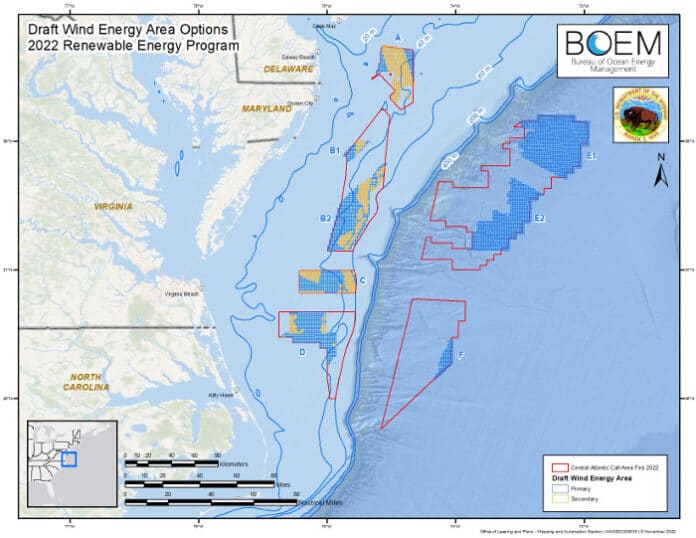North Carolina Construction News staff writer
The Federal Bureau of Ocean Energy Management (BOEM) has announced three final Wind Energy Areas in the Central Atlantic, none in North Carolina.
Gov. Roy Cooper responded with a statement last week, calling the decision “extremely disappointing.”
However, “it will not slow North Carolina’s momentum in reaching our offshore wind energy goals as we transition to a clean energy economy,” Cooper said. “The Biden-Harris Administration and North Carolina have outlined strong goals to increase offshore wind energy generation and this decision jeopardizes both plans.
“North Carolina remains committed to becoming the nation’s leader in offshore wind energy and stands ready to work with the Bureau of Ocean Energy Management to identify alternative solutions to solve this problem.”
The three final wind energy areas approved by BOEM are in offshore Delaware, Virginia, and Maryland – selected from eight applicants in four states, including North Carolina.
All three are in comparatively shallow water, but BOEM may identify additional opportunities for future leasing in deepwater offshore areas, pending further study”.
North Carolina is committed to building out the supply chain and workforce necessary to be the nation’s leader in offshore wind energy with more than 232,496 acres already leased off the coast for offshore wind development, Cooper said in the statement, adding “state officials stand ready to work with BOEM to identify additional WEAs that will allow North Carolina to meet its offshore wind goals”.
In 2021, Governor Cooper signed Executive Order 218 reaffirming North Carolina’s commitment to offshore wind power as the state transitions to a clean energy economy and established offshore wind development goals of 2.8 gigawatts off the North Carolina coast by 2030 and 8.0 GW by 2040. Achieving these goals would power roughly 2.3 million homes across the state by 2040 and create thousands of good-paying clean energy jobs. In addition to creating economic benefits across North Carolina, these offshore wind goals would help reach the statutory requirements of 2021’s House Bill 951, which requires a 70% reduction in power sector greenhouse gas emissions by 2030 and carbon neutrality by 2050.
President Biden has set offshore wind goals at 30 GW by 2030 and 110 GW by 2050 – enough to power more than 10 million American homes with clean energy by 2030.
North Carolina encouraged BOEM to collaborate with the State and stakeholders as well as the North Carolina Department of Military and Veterans Affairs during the assessment of the Central Atlantic Call Area.
“Unfortunately, it doesn’t appear that BOEM did those things,” Cooper said.

